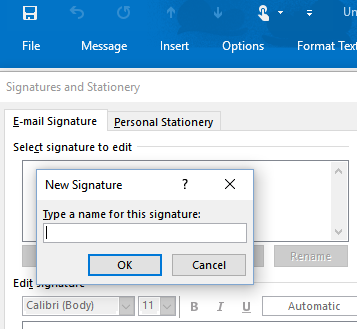

Install a recent version of npm and Node.js on your computer. If you prefer to host the web server for the sample on your computer, follow these steps: The next time you create a message or appointment, you'll see the signature you selected applied by the add-in. Once you've assign the templates you want to use, choose Save. You can assign the templates to a New Mail, Reply, or Forward action. The task pane will load a page of sample templates. In the task pane fill out the fields for your signature data. This will open the task pane for the add-in. You should see a notification at the top of the message that reads: Please set your signature with the Office Add-ins sample.Ĭhoose Set signatures. Open Outlook on Windows, on Mac, or in a browser. Once the add-in is loaded use the following steps to try out the functionality.
Sideload the add-in manifest in Outlook on the web, on Windows, or on Mac by following the manual instructions in the article Sideload Outlook add-ins for testing. Download the manifest.xml file from this sample to a folder on your computer. The add-in web files are served from this repo on GitHub. You can run this sample in Outlook on Windows, on Mac (new UI), or in a browser. If the user chooses to set a signature, the add-in opens the task pane for the user to continue setting their signature. When the user sends a new message, or creates a new appointment, the add-in displays an information bar prompting the user to create a signature. In this scenario, the add-in helps the user manage their email signature, even when the task pane isn't open. Use Outlook event-based activation to set the signature Note: If you don't have a Microsoft 365 subscription, you can get one for development purposes by signing up for the Microsoft 365 developer program. Set a signature for Outlook to use in messages and appointments. Use event-based activation to respond to events when the task pane isn't open. If no signature is set, the add-in prompts the user to set a signature, and can then open the task pane for the user.įor documentation related to this sample, see Configure your Outlook add-in for event-based activation. 
The add-in can respond to events, even when the task pane isn't open. This sample uses event-based activation to run an Outlook add-in when the user creates a new message or appointment. Applies to: Outlook on Windows | Outlook on the web | Outlook on Mac (new UI) Summary






 0 kommentar(er)
0 kommentar(er)
